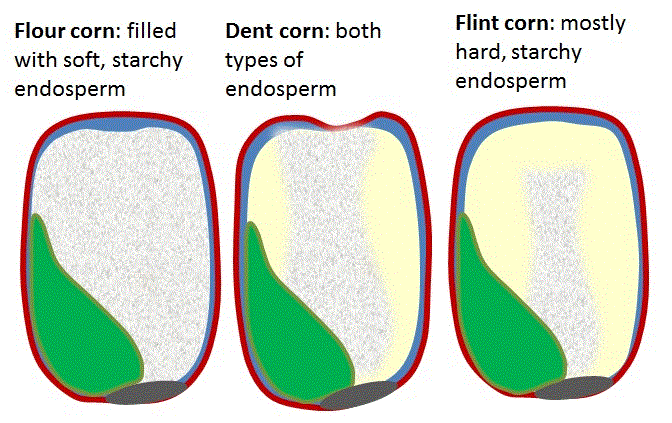Good questions, William. Thanks for your response. I've only grown Maiz Morado for one year. Only a few of the stalks produced good cobs like the one pictured in my post, the others were not that great (small, odd shaped, some stalks with very small vestigial "triplet" cobs or no cobs at all... some of the problems were due to Japanese beetle style foraging, but not all), and I don't think the genetic diversity is that great. The cultivar is originally from the Andes, and then grown in New Mexico to adapt to northern hemisphere for some years before being sold to the seed company I got it from (Baker Creek). The Andes and New Mexico are very different than the wet and rich Appalachians. I originally thought I'd just keep doing selective breeding of this one cultivar, and that may have worked out, but after that first year, I decided to bring in some heirloom Appalachian dent corns that had better flavor and to speed up the local climate adaptation and increase genetic diversity. So if my ONLY goal was highest anthocyanin content, I'd stick with Maiz Morado, but for the other traits, I need more genes mixed in.
You asked for more details about the other traits I seek. Yes, stronger stalks to prevent lodging during heavy rains/wind (Blue Clarage trait), pest and smut resistance (Blue Clarage), I'd like to have several ears per stalk (Bloody Butcher trait), really good rich nutty flavor (trait of Jimmy Red (and to a lesser extent Bloody Butcher)). All of these are more locally adapted to my region, so will provide good genes there perhaps. From what I understand, Blue Clarage, Bloody Butcher, and Jimmy Red are all dent corn. Maiz Morado is a flour corn, and Jerry Petersen Blue is a flint corn? (though they are all "field corn" and can all be used for flour).
I am concerned about flowering time. I don't know what to expect there. In future years, after finding out when each one flowers, I may need to stagger plantings so they flower at the same time. But then the agro-ecotype ("landrace") I'm wanting, I don't want them blooming at different times, so I'd have to then select for consistent flowering time too, unless there's some benefit to a diversity of flowering times? (Wish I could time the flowering to avoid the Japanese beetle onset so they won't be eating the silk/stigmas!)
Does anyone know if there are other field corn cultivars resistant to pests and diseases that I should consider?
Ryan











